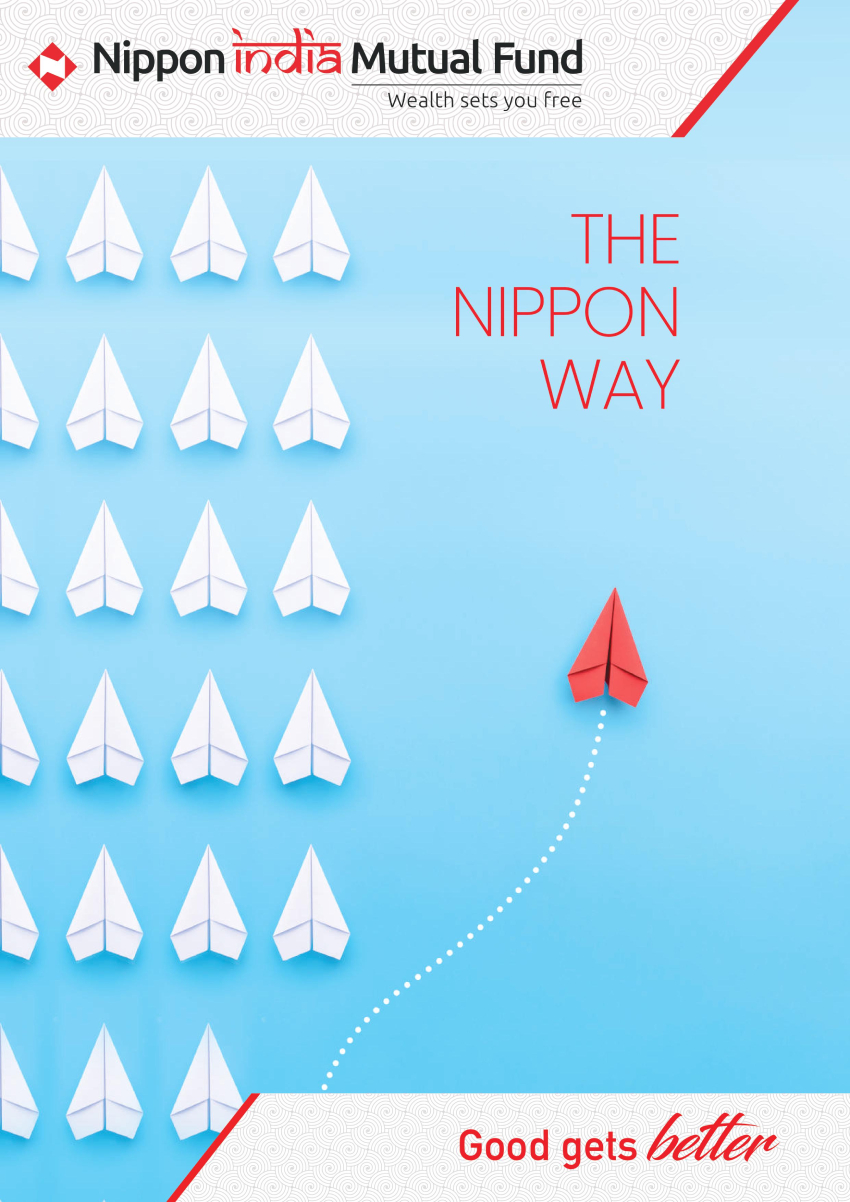Page
/ 5Investment Process – the Nippon Way
In the last edition of the Nippon Way, we explained to you the importance of having Sector Limits with an endeavour to achieve relatively consistent returns. In Part 2 of the Nippon Way, we are bringing to you the concept of ‘Active Share’ and its relevance in portfolio construction.

Part 2: Investment Process
FUND CASING:
Active Share
Any ‘actively’ managed fund should attempt to generate active returns. i.e., they should attempt to generate higher returns than the markets. It is for this potential to generate better returns that investors pay a relatively higher expense ratio for such funds.

Any fund manager attempting to better returns than the benchmark, may take exposure which is different from the benchmark composition. In other words, the fund manager should take ‘risks’ to generate those returns. Should that risk not be measured? Should there not be any control on how much the fund manager could ‘risk’ the portfolio to generate active returns?
Unbridled risk-taking may have the potential to generate better returns, yet at the same time may subject the fund to extreme volatility, and periods of severe underperformance vs markets, if the strategy doesn't pay off. It may be prudent to exhibit controlled-aggression while attempting to generate ‘alpha’. Introducing: Active Share.
Active Share is a measure of the percentage of stock holdings in a manager’s portfolio that differs from the benchmark index. It is calculated by taking the sum of the absolute value of the differences of the weight of each holding in the manager’s portfolio and the weight of each holding in the benchmark index and dividing by two.The active share of a mutual fund ranges from zero (pure index fund) to 100% (no overlap with the benchmark).

THE NIPPON WAY
A very low Active Share would mean that the fund is being managed very close to the index, and hence may not justify the fees charged for attempting to generate alpha. In fact, such funds may end up generating similar returns as markets, after adjusting for expenses. On the other hand, a very high Active Share may mean that the fund is being managed very aggressively, having a very high risk-return profile, which may not be palatable for most investors
At Nippon India Mutual Fund, we have defined Active Share thresholds for various open-ended equity funds to make sure that the Fund Managers take acceptable risks with an endeavour to generate alpha. Active Share range that is neither too low nor too high rendering the funds risky. Striking the right balance, the Nippon Way!

Disclaimer: Past Performance may or may not be sustained in the future. The information herein above is meant only for general reading purposes and the views being expressed only constitute opinions and therefore cannot be considered as guidelines, recommendations or as a professional guide for the readers. The document has been prepared on the basis of publicly available information, internally developed data and other sources believed to be reliable. The sponsor, the Investment Manager, the Trustee or any of their directors, employees, associates or representatives (“entities & their associates”) do not assume any responsibility for, or warrant the accuracy, completeness, adequacy and reliability of such information. Recipients of this information are advised to rely on their own analysis, interpretations & investigations. Readers are also advised to seek independent professional advice in order to arrive at an informed investment decision. Entities & their associates including persons involved in the preparation or issuance of this material shall not be liable in any way for any direct, indirect, special, incidental, consequential, punitive or exemplary damages, including on account of lost profits arising from the information contained in this material. Recipient alone shall be fully responsible for any decision taken on the basis of this document.
